Bed bugs have become an increasingly common pest problem throughout the United States. They have been found in many different places where people congregate, from schools and restaurants to doctors' offices and movie theaters, but the worst infestations are usually in the places where people live, rest, and sleep, like houses, apartments, hotels, and homeless shelters. At these locations, bed bugs are most common around pieces of furniture people sit or lie down on—beds, chairs, and sofas. To discover whether bed bugs are present in a room or a piece of furniture, a device called a bed bug interceptor trap can be helpful. Interceptor traps catch and collect bed bugs when they try to travel between their human hosts and their hiding places. Bed bug interceptor traps are easy to make out of commonly found household items and disposable plastic containers.
How an Interceptor Trap Works
Interceptor traps placed on all of the legs of a piece of furniture can help prevent bed bugs from infesting that piece of furniture and also reduce the movement of bed bugs already on the furniture to the rest of the room. Interceptor traps rely on the poor ability of bed bugs to climb on smooth surfaces. The traps have rough areas to allow bed bugs to enter easily and a smooth-surfaced moat that prevents them from escaping. Bed bugs trying to either get onto or leave a piece of furniture find themselves trapped in this smooth-surfaced moat instead.
Items Needed to Create an Interceptor Trap
- A small container that will fit under a furniture leg (example: a margarine tub or a food storage container)
- A large container that the small container will fit inside (example: food storage container)
- When the small container is placed within the larger container, there should be at least ¼" space between the walls of the two containers
- Rough-surfaced tape (example: masking tape)
- Glue (example: hot glue gun or super glue)
- Option: Surface applications to make escape from the traps even more difficult
- Unscented baby powder (talcum powder)
- Car polish
- Option: Support structures for each trap to prevent the traps from cracking under the weight of the furniture
- Square of tile or
- Square of plywood
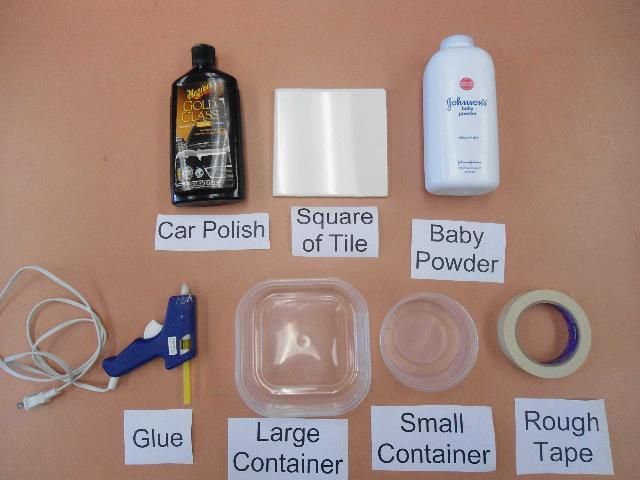
Step-by-Step Instructions for Creating an Interceptor Trap
- Cut four pieces of rough-surfaced tape. The cut pieces should be at least as high as the wall of the smaller container.
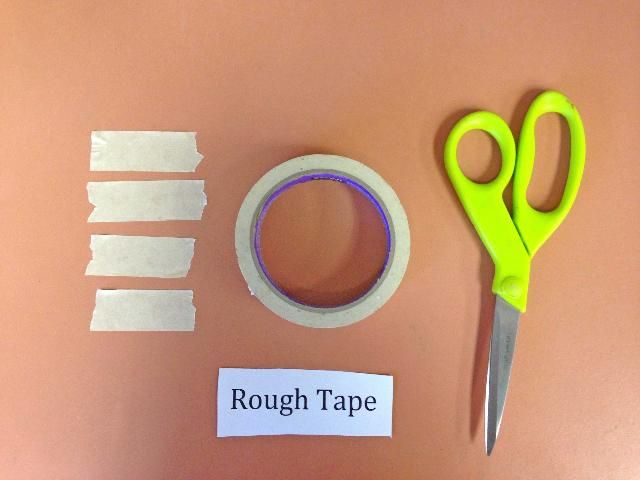
2. Evenly space and firmly press the four pieces of tape vertically on the inside surface of the smaller container to connect the inner top edge with the container bottom.
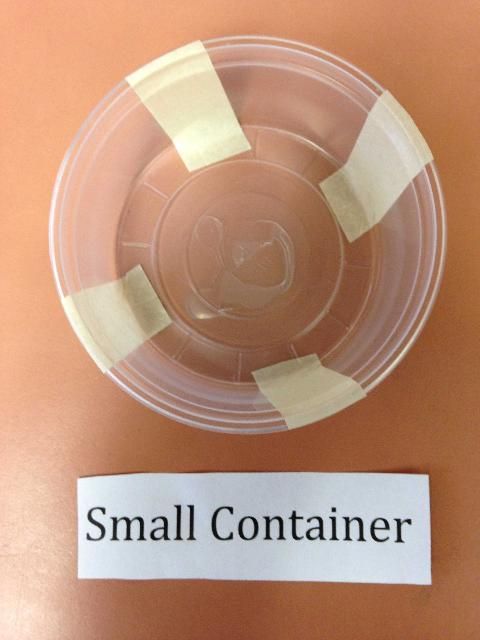
3. Wrap the rough-surfaced tape around the exterior side of the larger container so that the entire outer surface is covered from the base to the upper edge of the container.
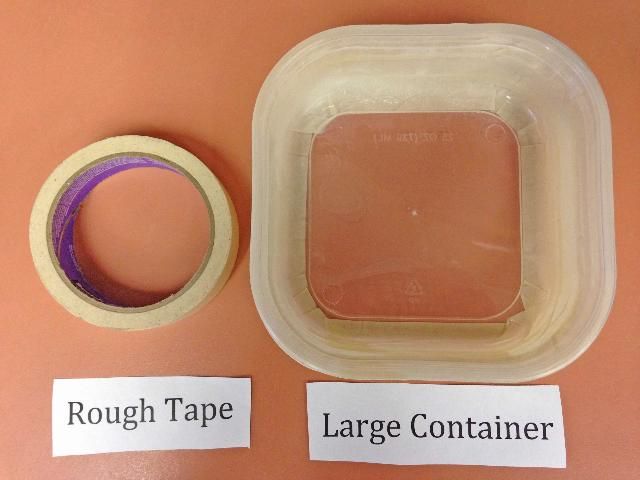

4. Glue the smaller container onto the center of the bottom of the larger container.
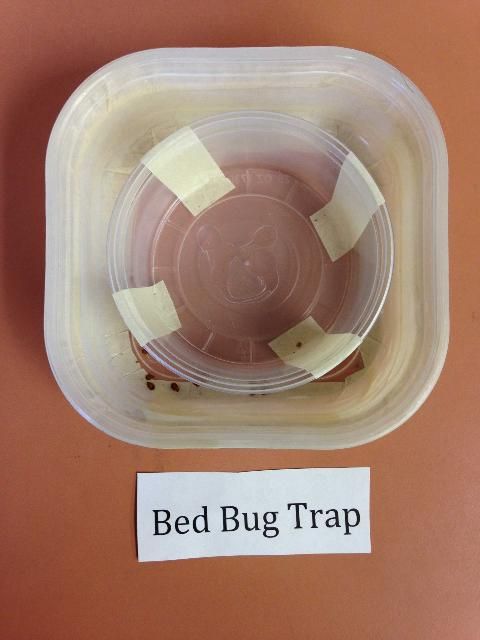
5. Make surfaces smooth so that bed bugs cannot escape.
Option: Apply car polish or talcum powder to the interior side of the larger and exterior side of the smaller container. Follow the directions on the car polish bottle on how to apply and buff the product. If using talcum powder, do not touch the dusted trap surface with your hands. Talcum powder should be reapplied as necessary.
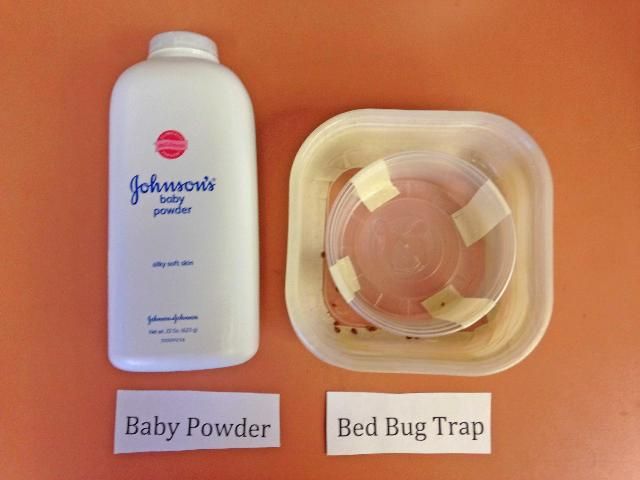
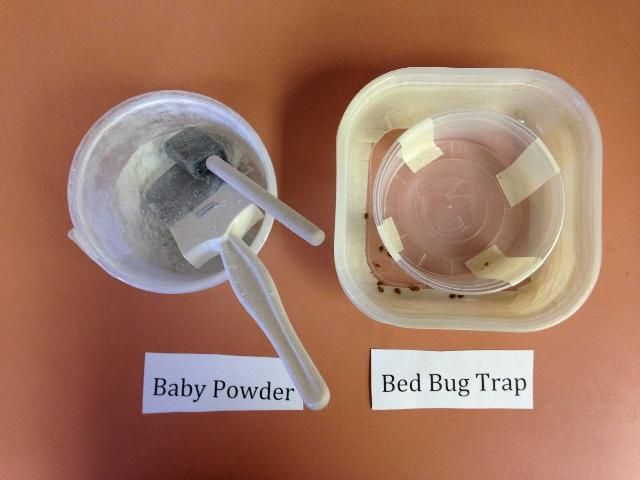
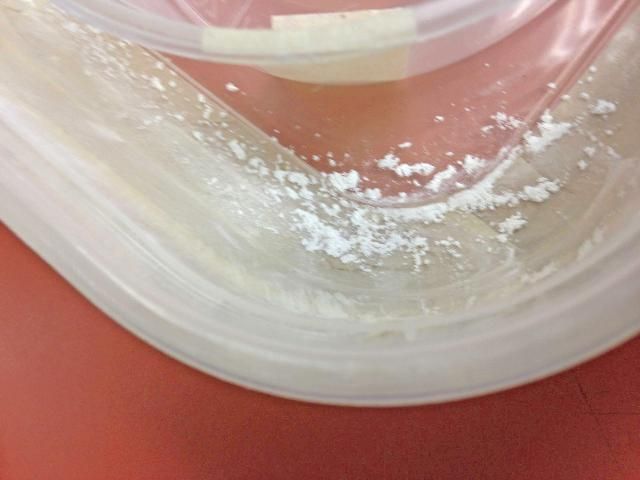
6. Move the piece of furniture to be protected away from walls and other furniture, and place a trap underneath each of its legs. With beds, bedding should not be touching the floor, walls, or other furniture.
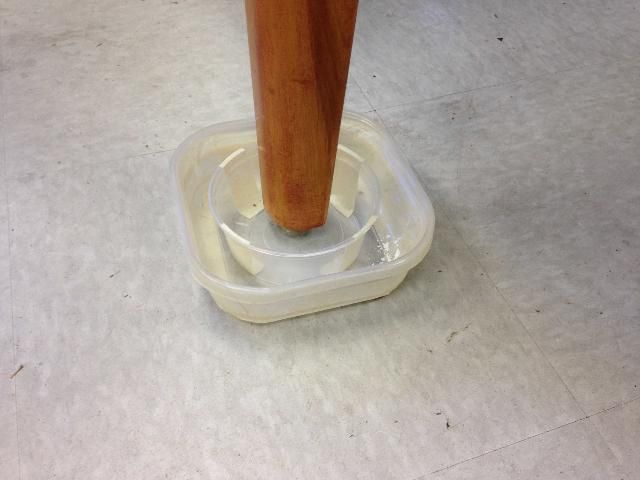
Option: On carpeted floor, place a square of tile or plywood underneath the trap to prevent the trap from breaking under the weight of the furniture.
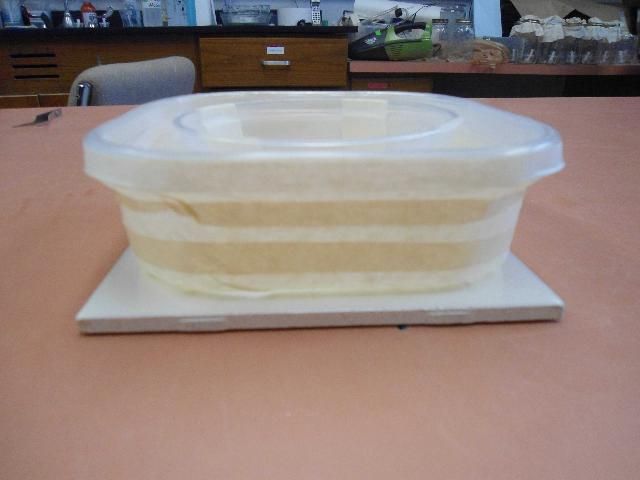
Any bed bugs found caught in the moat of the trap (Figure 12) can be left there to die or drowned in soapy water. (Spray them with a 10% dish detergent and water mixture.) To make sure the insects in the trap are in fact bed bugs, take them to an expert for positive identification. Use tweezers or a cotton swab to put them in a leak-proof container of 70% rubbing alcohol, or, if you can't extract them from the trap because they've managed to creep under the smaller container, put the whole trap in a sealed plastic bag and take it to a pest control professional or county Extension agent, who can help you take the next step toward eradication.
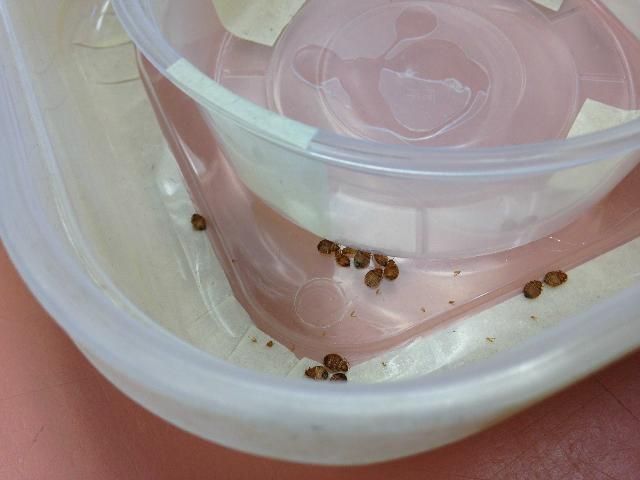
Concluding Comments
Use bed bug interceptor traps in places of human habitation to detect bed bugs before they become established. It is much easier to manage a bed bug invasion if you catch it early. A few bed bugs can be stopped, but an infestation of thousands of them is much more difficult and expensive to control. Further information on bed bugs can be found at: Bed Bugs and Blood Sucking Conenose https://edis.ifas.ufl.edu/ig083.